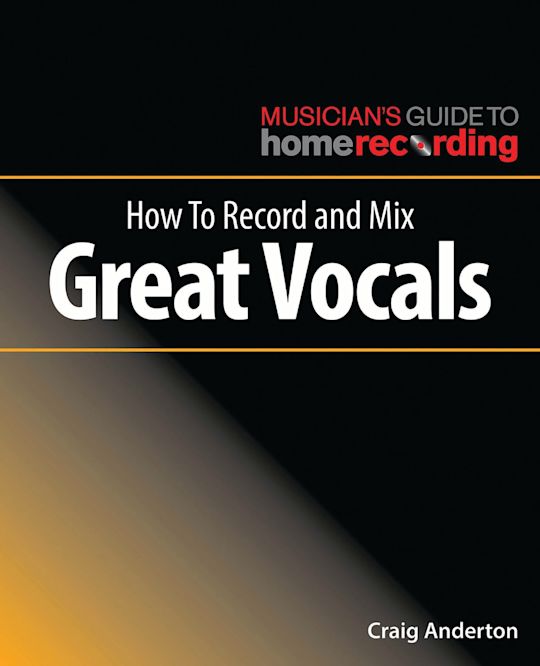- Home
- ACADEMIC
- Education
- Technology and Education
- How to Record and Mix Great Vocals
How to Record and Mix Great Vocals
You must sign in to add this item to your wishlist. Please sign in or create an account
Description
Vocals tell the story that make the all-important connection between singer and listener, but recording a vocal isn't as simple as just putting a mic in front of someone and hoping for the best. This book – written in a clear, practical, non-intimidating style – covers all aspects of creating great vocals including:
• How to choose the right mic
• Mic placement
• Microphone accessories like cables and pop filters
• Mic preamps
• How to take maximum advantage of composite recording
• Editing vocals digitally to prepare them for the best possible mix
• Using processors (such as equalization, dynamics, and time-based effects) during mixdown to enhance vocal quality
• Automation
• Techniques for layered vocals, and more
However, what makes this book truly special is that it goes beyond technology to include valuable tips and techniques on how to obtain the best vocal performances. Topics include how to connect with listeners, ways to convey a singer's personality, "emotional" dynamic range, and how to know when a take is the right take.
Loaded with illustrations and featuring the judicious use of sidebars to give details on selected topics for those who want to know "why" as well as "how," How to Record Great Vocals is the key to transforming raw vocals into satisfying, emotional experiences.
Table of Contents
The Impact of Great Vocals
How to Use This Book
Tips and References
Chapter 1. Your Mic Is Your Instrument
Dynamic vs. Condenser Mics
The Importance of Room Acoustics
Connecting Mics
Mic Preamps and Setting Levels
Accessories
Key Takeaways
Chapter 2. Recording Techniques
To Hold or Not to Hold?
Mic Technique
Monitoring Your Vocals
Recording a Vocal
Overdubbing Vocals
Punching Vocals
Composite Vocals
Key Takeaways
Chapter 3. Preparing Your Vocals for the Mix
Step 1: Remove Hiss
Step 2: Delete Silences
Step 3: Reduce Breath Noises and Inhales
Step 4: Reduce Plosive Severity
Step 4: Phrase-by-Phrase Normalization/Gain Changes
Step 5: De-Essing
Step 6: Pitch Correction .
Step 7: Tweak the Vibrato
Time to Start Mixing
Key Takeaways
Chapter 4. Equalization
Equalizer Responses
Main EQ Parameters
What You’ll End Up Equalizing .
Dynamic Equalization
Automated Equalization .
Typical EQ Curves for Vocals
Key Takeaways
Chapter 5. Dynamics Processing
How Dynamics Processors Work
Types of Dynamics Processors
Sidechaining
Key Takeaways
Chapter 6. Reverb and Delay
Reverb Processing
Delay Processing .
Key Takeaways .
Chapter 7. Automating Parameter Changes
Automation Basics
Automation Methods .
Automating Effects .
Key Takeaways
Chapter 8. Double-Tracking, Harmonizing, and Layering Vocals
Automatic Double-Tracking (ADT) Plug-Ins
Pseudo-ADT with Pitch Correction
Shifting Pitch to Create Pseudo-Double Tracking
How to Mix Double-Tracked Vocals
The Doubled Vocal Fix
Creating Harmonies with Pitch Correction Software
Techniques for Layered Vocals .
Key Takeaways
Chapter 9. Vocal Performance Tips
Emotional Dynamic Range
Avoiding the Vocal Disconnect .
The Performance Curve
Product details
| Published | 21 Dec 2023 |
|---|---|
| Format | Ebook (Epub & Mobi) |
| Edition | 1st |
| Extent | 96 |
| ISBN | 9781493082612 |
| Imprint | Hal Leonard |
| Series | The Musician's Guide to Home Recording |
| Publisher | Bloomsbury Publishing |



































